Introduction to Bicep Curls
Bicep curls, a staple in the fitness world, are more than just about building arm muscles. They represent the quintessence of strength training, targeting the biceps brachii, the muscle that greatly contributes to the arm’s appearance and function.
But what exactly are bicep curls?
Bicep curls are a resistance exercise that isolates the biceps muscle. By lifting a weight using the strength of your biceps, you’re inducing a series of muscular contractions that lead to muscle growth. Whether you’re using dumbbells, barbells, or machines, the principle remains: bend the elbow to curl the weight upwards and extend the elbow to lower it back down.
So, why are they so essential for arm development?
- Aesthetics: A well-developed bicep is often considered a symbol of strength and fitness. For many, achieving that “peak” is a fitness goal that speaks volumes.
- Functionality: Beyond looks, the biceps play a crucial role in daily activities. Whether lifting a bag, opening a door, or even just waving hello, you’re using your biceps.
- Stabilization: Performing bicep curls can enhance grip strength and provide stability to the shoulder joint, lowering the likelihood of injuries.
While focusing on isolated exercises like the bicep curl is beneficial, integrating them into a broader workout regime can yield even better results. For instance, incorporating full-body exercises can complement targeted exercises and offer a holistic approach to fitness. Speaking of full-body workouts, you might want to explore our Comprehensive Guide to Calisthenics Workout, which delves into exercises that engage multiple muscle groups, ensuring overall body strength and endurance.
The Basic Bicep Curl: Laying the Groundwork
It’s crucial to nail the basics before diving into various variations and advanced techniques. The foundation of any successful fitness regimen lies in executing fundamental exercises with precision and understanding.
How to Perform the Standard Bicep Curl with Proper Form:
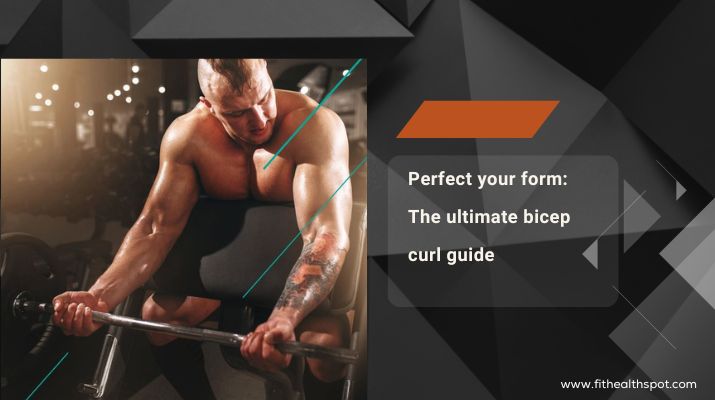
- Starting Position: Stand upright with your feet shoulder-width apart. Hold a dumbbell in each hand with your palms facing forward and arms fully extended by your side.
- The Curl: Slowly bend your elbows, bringing the weights towards your shoulders. Ensure your elbows remain close to your body and don’t move backward or forward. The movement should be fluid, with the biceps doing the work.
- The Peak: Pause briefly at the top of the curl, squeezing your biceps for maximum muscle engagement.
- The Descent: Slowly lower the dumbbells back to the starting position, maintaining control throughout to ensure muscle activation during the eccentric (lowering) phase.
Common Mistakes to Avoid:
- Swinging the Weights: Using momentum to lift the weights reduces the effectiveness of the exercise and can lead to injuries.
- Not Fully Extending the Arm: Not returning to the full starting position means you’re missing out on the full range of motion benefits.
- Moving the Elbows: Locking your elbows by your side ensures that the biceps, not other muscles, are doing the work.
- Lifting Too Heavy: Always prioritize form over weight. If you can’t perform the movement without compromising form, consider reducing the weight.
While mastering the bicep curl, it’s beneficial to strengthen the surrounding and complementary muscles. For instance, the wrist flexors and extensors play a pivotal role in grip strength, which is essential for bicep curls. Strengthening these muscles enhances your curling ability and prevents wrist-related injuries. Dive into our Complete Guide to Wrist Curls to discover exercises to fortify your wrist muscles, providing a strong foundation for your bicep workouts.
Diving into Bicep Curl Variations
While the standard bicep curl is fundamental to arm development, diversifying your exercises can challenge your muscles differently, leading to more comprehensive strength and growth. Here are a couple of variations to integrate into your arm workout routine:
Reverse Bicep Curls:
Unlike the traditional curl, the reverse curl targets both the biceps and the brachioradialis, a forearm muscle.
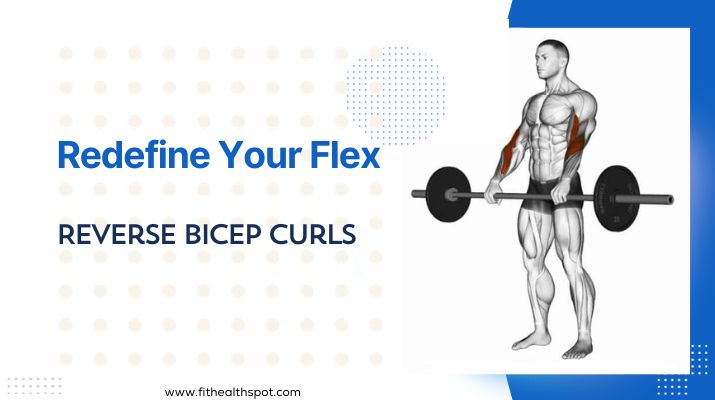
How to Execute:
- Starting Position: Similar to the standard curl, stand with feet shoulder-width apart. Grasp dumbbells with an overhand grip (palms facing down) and arms fully extended by your side.
- The Curl: Slowly lift the weights towards your shoulders, keeping your palms down. As always, keep those elbows stable and close to your body.
Unique Benefits:
- Forearm Strengthening: The reverse grip emphasizes the forearm muscles, enhancing grip strength and forearm development.
- Improved Wrist Stability: Consistently doing reverse curls can enhance wrist stability and decrease the likelihood of strain.
Cable Bicep Curls:
Cable machines offer consistent resistance throughout the movement, unlike free weights.

How to Execute:
- Setting Up: Position yourself before a cable machine with a bar attachment set at the lowest level.
- Starting Position: Grasp the bar with an underhand grip, arms extended, and hands shoulder-width apart.
- The Curl: Curl the bar towards your shoulders, keeping the motion smooth and controlled, and then slowly release back to the starting position.
Advantages:
- Consistent Tension: The cable provides uniform resistance, ensuring that your biceps are engaged throughout the entire movement.
- Enhanced Range of Motion: The flexibility of the cable machine allows for a more extensive range of motion, providing a deeper stretch and contraction.
- Safety: The controlled nature of the machine minimizes the risk of injury from dropping weights or using improper form.
When discussing arm workouts, it’s essential to remember the close relationship between the biceps and the back muscles, particularly the lats. Your biceps play a crucial supporting role as you pull in exercises like rows or pull-ups. To dive deeper into exercises focusing on this synergy, check out our Lat Workouts Guide, which offers routines that harmoniously engage both your back and arms.
Seated Bicep Curls:
The seated variation of the bicep curl provides a unique twist to the traditional movement by limiting momentum and focusing more intently on the biceps.
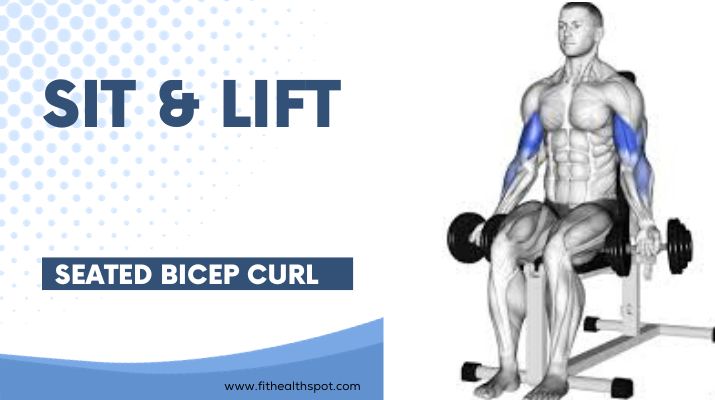
How to Execute:
- Starting Position: Sit on a bench with a back support, feet firmly on the ground. Hold dumbbells with an underhand grip, arms fully extended.
- The Curl: Lift the weights towards your shoulders, ensuring your back remains against the bench support to prevent swaying.
Benefits Of Standing Curls:
- Minimized Momentum: Sitting reduces the chances of using your back or legs to swing the weight, ensuring pure bicep engagement.
- Enhanced Isolation: The seated position improves the biceps’ isolation as other muscles are less activated.
EZ Bar Bicep Curls:
The distinctive wavy design of the EZ bar is not just for aesthetics; it provides a more natural grip that many find more comfortable.
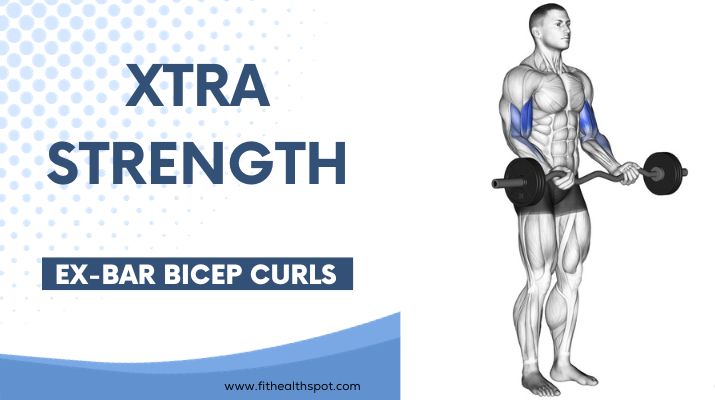
How to Execute:
- Starting Position: Stand with feet shoulder-width apart, grasping the EZ bar with an underhand grip at the outer curves.
- The Curl: Lift the bar towards your chest, maintaining a stable elbow position.
Advantages:
- Wrist-Friendly Design: The distinctive handle minimizes wrist strain, making it a perfect choice for individuals experiencing wrist discomfort or problems.
- Diverse Grip Options: The EZ bar allows multiple grip positions, targeting the biceps at various angles.
Building strong arms isn’t just about lifting weights; it’s also about ensuring optimum blood flow to support muscle growth and recovery. Our Nitric Oxide Dump Exercise Guide provides insights into exercises that promote nitric oxide production, which enhances blood flow during workouts.
Bicep Curl Machine:
Taking the guesswork out of positioning and technique, the bicep curl machine offers a more guided approach to arm workouts.
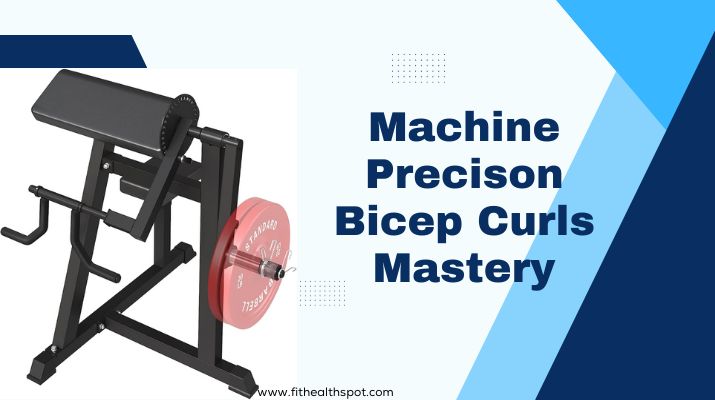
Introduction and Benefits:
- Consistency: The machine ensures a standardized range of motion, ideal for beginners or those refining their technique.
- Safety: With fixed movement patterns, there’s a reduced risk of injury.
- Isolation: The machine offers superior bicep isolation, focusing solely on the target muscles without involving secondary muscles.
Bicep Curl Machine at Planet Fitness:
A step above the regular machines, the version at Planet Fitness offers enhanced features tailored for varied fitness levels.
Features and Unique Offerings:
- Adjustable Resistance: Suitable for beginners to advanced users, allowing progressive overload.
- Ergonomic Design: Ensures comfort and proper form throughout the exercise.
- Digital Trackers: Some models offer digital feedback on reps, sets, and muscle engagement, providing valuable insights into your workout.
From Biceps to Full Body: Incorporating Compound Movements
While isolation exercises like bicep curls are essential for targeted muscle growth, integrating them with compound movements can provide a more well-rounded fitness routine. These movements simultaneously engage multiple muscle groups, offering strength and functional benefits.
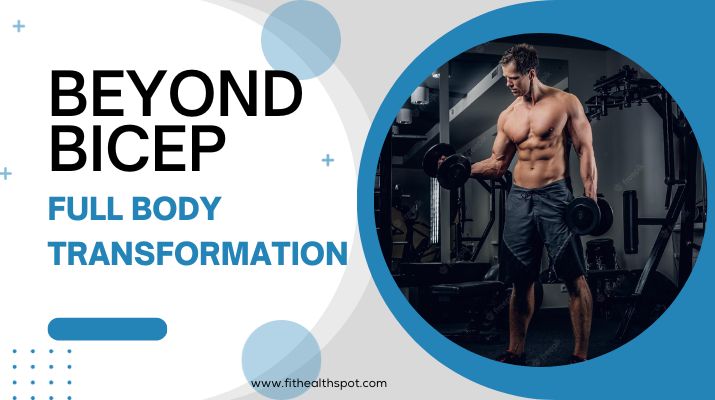
Lunges – A Leg Dominant Exercise with Arm Integration:
Lunges are quintessential for leg development but can also be paired with bicep curls for an augmented workout. Holding dumbbells while performing lunges and incorporating curls at the bottom of each lunge can increase the intensity and engage the upper body.
Recommended Reading: Dive deeper into this versatile leg exercise with our Lunges Exercise Guide.
Sumo Deadlift – A Full Body Powerhouse:
With its wide stance and emphasized posture, the sumo deadlift works the legs, glutes, back, and, yes, even the arms. Your biceps stabilize as you lift, making it a great complement to bicep-focused routines.Further Exploration: Understand the mechanics and benefits of this full-body lift in our Sumo Deadlift Complete Guide
Quadriceps and Hamstrings – The Powerhouses of Leg Workouts:
Squats, whether traditional, hack or on a leg press machine, play a pivotal role in lower body development. While primarily targeting the legs, they also require a strong grip and arm engagement, especially when using additional weights.
Deep Dive: Compare the techniques and benefits of these fundamental leg exercises in our Guide on Hack Squat vs. Leg Press vs. Traditional Squat.
Perfecting Your Form and Technique: Safety Measures & Benefits
Regardless of the exercise, maintaining proper form is paramount, not just for maximizing muscle engagement but also for ensuring safety.
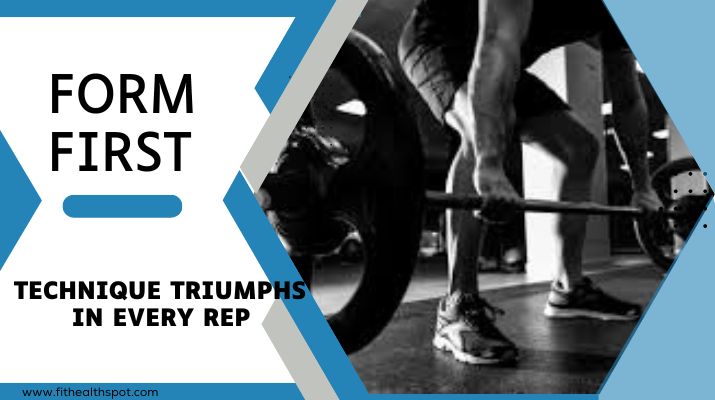
Back Health during Bicep Curls:
While the focus is on the arms, ensuring a neutral spine and engaged core during bicep curls can prevent unnecessary strain on the back. Exercises like hyperextensions can be instrumental in strengthening the lower back, promoting better posture during curls.
Essential Reading: Protect your back and enhance your workouts with our Guide on Hyperextensions – Variations, Benefits, & Safety.
Balancing Bicep Work with Lower Body Exercises:
It’s crucial to maintain a balanced workout routine. Pay attention to other muscle groups if you’re focusing on the biceps. Exercises like the Bulgarian squat target the lower body, specifically the glutes, offering a comprehensive workout plan.
Recommended Guide: Delve into the benefits and techniques of the Bulgarian squat and other glute exercises in our Bulgarian Squat & Glute Exercises article.
Maximizing Bicep Growth: Tips and Tricks
Complementing Biceps with a Strong Back:
Training your back, especially the latissimus dorsi, can improve your overall upper body strength and complement and enhance the appearance of your biceps. The last spread exercise is particularly beneficial in this regard.

Learn More: Discover how to master the lat spread and its benefits in our Guide to the Lat Spread.
Achieving a Complete Physique: Don’t Forget the Calves:
While bicep curls target the upper body, it’s essential not to neglect the lower half. Sculpted calves balance a muscular physique and are pivotal for overall functionality and aesthetics.
Further Reading: Check out calf exercises’ top techniques and benefits in our Guide on Best Calf Exercises.
Conclusion: The Road to Stronger Biceps
Your journey to achieving stronger biceps doesn’t end here. It’s a continuous process of learning, adapting, and integrating new exercises and techniques.
Recap of Bicep Curl Variations: From the standard curl to variations using the EZ bar and machines, many techniques add diversity to your bicep workouts. Ensure you keep rotating between them to provide your muscles with the necessary stimulus for growth.
Final Thoughts: As you continue on this path, remember to combine your bicep exercises with other full-body workouts, ensuring a balanced and comprehensive training regime. Stay consistent, stay informed, and most importantly, enjoy the journey towards your fitness goals!
Learn more about bicep curls or Compound Bicep Curl Movement
Frequently Asked Questions (FAQs)
What happens if you do bicep curls every day?
Doing bicep curls daily can lead to overtraining, potentially causing muscle fatigue, reduced growth, and increased risk of injury. Rest and recovery are essential for muscle development.
What part of the bicep does preacher curls work?
Preacher curls primarily target the brachialis, an underlying muscle, and the lower part of the biceps brachii, promoting a peak in the bicep muscle.
How many bicep curls should I do daily?
The ideal number varies based on goals and fitness levels. For general strength and hypertrophy, 3-4 sets of 8-12 reps every other day are often recommended. Always consult with a fitness professional for personalized advice.
How to do proper bicep curls?
Stand with feet shoulder-width apart, hold dumbbells with palms facing forward, and keep elbows close to the torso. Curl the weights while contracting the biceps, ensuring only the forearms move. Lower back down slowly.
How do I make bicep curls stronger?
To strengthen your bicep curls, progressively increase the weight, integrate variations, ensure proper nutrition, and incorporate complementary exercises like rows and pull-ups.

